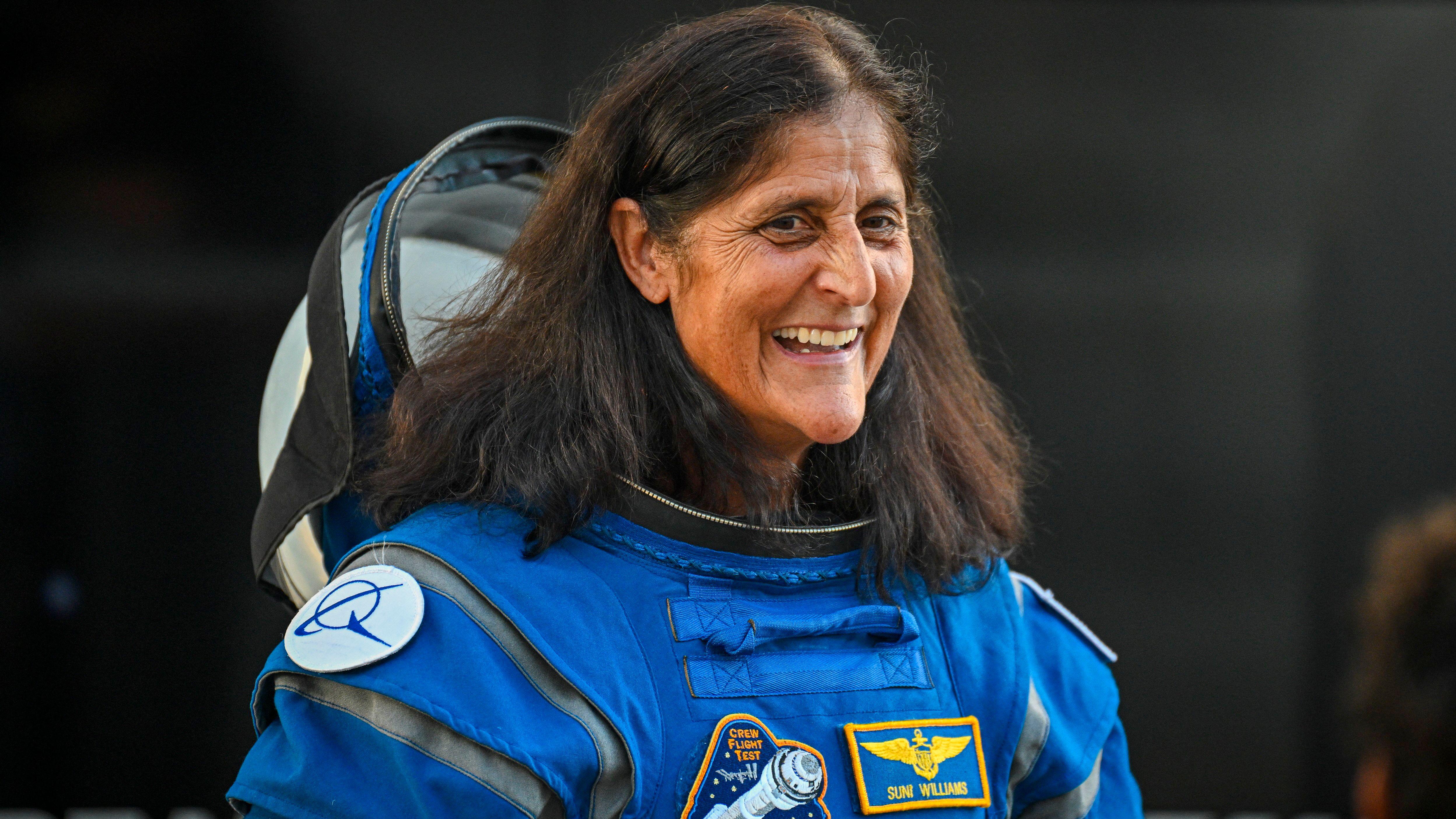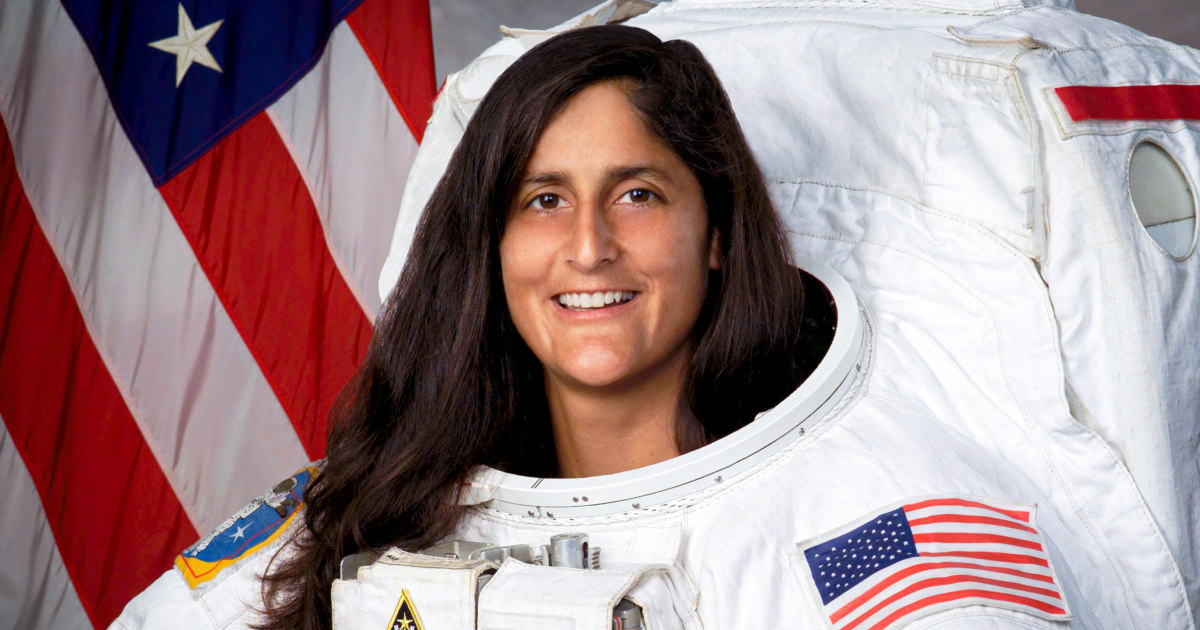HISTORIC HOMECOMING: WILMORE AND WILLIAMS SAFELY RETURN AFTER 9-MONTH ORDEAL IN SPACE
NASA astronauts Butch Wilmore and Sunita “Suni” Williams have completed one of the most dramatic and closely-watched missions in recent spaceflight history, returning to Earth after an unexpected nine-month stay aboard the International Space Station (ISS). Their journey, which began as a short test flight on Boeing’s Starliner spacecraft, became a saga of technical setbacks, resilience, and international cooperation, ultimately concluding with a safe splashdown off the coast of Florida in March 2025.
NASA astronauts Butch Wilmore and Suni Williams’ return to Earth after an extended mission aboard the International Space Station (ISS) highlights the complexities and unpredictability inherent in human spaceflight. Their mission, initially planned as a short eight-day test flight aboard Boeing’s Starliner spacecraft, evolved into a nine-month stay due to technical challenges. This unexpected extension tested the astronauts’ physical endurance, mental resilience, and adaptability, underscoring the rigorous training and preparation required for space missions.
The prolonged mission also provided NASA with valuable data on the effects of extended spaceflight on the human body. Wilmore and Williams underwent comprehensive health monitoring during their stay, contributing to research on muscle atrophy, bone density loss, and the psychological impacts of isolation. These insights are crucial as NASA prepares for longer missions, including Artemis lunar expeditions and eventual crewed Mars journeys, where astronauts will face months or years away from Earth.
FROM AN EIGHT-DAY FLIGHT TO A NINE-MONTH SAGA: THE STARLINER MISSION’S UNFOLDING DRAMA
Wilmore and Williams launched on June 5, 2024, as the first crew to fly Boeing’s long-awaited Starliner capsule under NASA’s commercial crew program. The mission was planned as a brief, eight-day demonstration to validate Starliner’s readiness for routine astronaut transport. However, soon after docking with the ISS, the Starliner suffered multiple technical failures, including helium leaks and thruster malfunctions, which made it unsafe for crewed re-entry. NASA and Boeing made the difficult decision to return the Starliner to Earth without its crew, leaving Wilmore and Williams to join the ISS Expedition 71/72 team and await a new ride home.
Over the following months, their return was repeatedly delayed by ongoing investigations into the Starliner’s propulsion system, mission scheduling conflicts, and even unfavorable weather at potential landing sites. The astronauts remained in good spirits, contributing to scientific research, station maintenance, and remote Starliner troubleshooting, but the uncertainty of their return highlighted the inherent risks and unpredictability of human spaceflight.
Wilmore and Williams’ ability to maintain high morale and productivity during their extended stay was aided by strong support from mission control and their crewmates aboard the ISS. The astronauts engaged in a wide range of scientific experiments, station maintenance, and outreach activities, demonstrating professionalism and dedication despite the uncertainty surrounding their return. Their experience highlights the importance of teamwork and communication in overcoming challenges in space.
The technical failures that grounded the Starliner spacecraft have prompted a thorough review by NASA and Boeing. The issues, including helium leaks and thruster malfunctions, revealed vulnerabilities in the spacecraft’s design and testing processes. NASA has mandated additional uncrewed test flights and system upgrades before Starliner can be certified for crewed missions again. This cautious approach reflects NASA’s commitment to astronaut safety and mission success.
THE SPACE X FACTOR: CREW DRAGON TO THE RESCUE
With Starliner grounded for further testing, NASA arranged for Wilmore and Williams to return aboard SpaceX’s Crew Dragon spacecraft. The Crew Dragon, which has become NASA’s workhorse for crewed missions, docked at the ISS in March 2025, enabling the long-awaited homecoming. NASA meticulously coordinated the crew handover and departure, prioritizing astronaut safety and operational flexibility amid changing weather forecasts.
On March 19, 2025, after donning their flight suits and sealing the hatch, Wilmore and Williams undocked from the ISS along with NASA astronaut Nick Hague and Russian cosmonaut Aleksandr Gorbunov. The Crew Dragon’s 17-hour return sequence culminated in a smooth splashdown in the Gulf of Mexico near Florida, where NASA recovery teams swiftly retrieved the astronauts for medical checks and transport to Houston’s Johnson Space Center.
SpaceX’s Crew Dragon spacecraft played a critical role in rescuing Wilmore and Williams, showcasing the maturity and reliability of commercial crew vehicles. Since its debut, Crew Dragon has completed multiple successful missions, becoming NASA’s primary vehicle for transporting astronauts to and from the ISS. The seamless integration of Crew Dragon into NASA’s operations demonstrates the agency’s effective partnership with private industry to advance human spaceflight capabilities.
The return of Wilmore and Williams also brings attention to the international nature of the ISS program. Alongside NASA astronauts, the station hosts cosmonauts from Roscosmos and astronauts from other space agencies, fostering cooperation in space exploration. The joint efforts in managing crew rotations, scientific research, and emergency contingencies exemplify the collaborative spirit essential for sustained human presence in orbit.


RESILIENCE, ROUTINE, AND THE HUMAN SIDE OF SPACEFLIGHT
Despite the technical and logistical challenges, Wilmore and Williams demonstrated remarkable resilience throughout their extended mission. Wilmore, a church elder, continued to minister remotely, leading prayer services from orbit. Williams, known for her athleticism and love of animals, stayed connected with her family and looked forward to reuniting with her two Labrador retrievers and enjoying a swim in the ocean. Their ability to maintain morale and contribute to ISS operations during an unplanned stay is a testament to the rigorous training and adaptability of NASA’s astronaut corps.
Both astronauts have now completed their post-mission recovery phase, readjusting to Earth’s gravity and undergoing medical evaluations to monitor the effects of prolonged spaceflight. Wilmore described the return to gravity as physically challenging, noting muscle soreness and neck pain, but both he and Williams expressed gratitude for the support of NASA, SpaceX, and their families during the ordeal.
Public interest in Wilmore and Williams’ mission has been particularly high in India, where Suni Williams is celebrated as a trailblazer with Indian heritage. Her achievements inspire a new generation of Indian youth to pursue careers in science, technology, engineering, and mathematics (STEM). NASA’s outreach efforts have leveraged her story to promote space education and international collaboration in the region.
The astronauts’ post-mission recovery involves a carefully managed rehabilitation program to help them readjust to Earth’s gravity. Muscle strengthening, cardiovascular conditioning, and balance training are key components of this process. NASA’s medical teams monitor their progress closely, ensuring that any long-term health effects are addressed promptly. This phase is critical for the astronauts’ well-being and future mission readiness.
COMMERCIAL SPACEFLIGHT UNDER SCRUTINY: LESSONS FROM STARLINER’S TROUBLES
The Wilmore-Williams mission has brought renewed scrutiny to the commercial crew program and Boeing’s Starliner project. NASA’s original goal was to have two independent, U.S.-built spacecraft—Starliner and SpaceX’s Crew Dragon—capable of ferrying astronauts to and from the ISS, providing redundancy and flexibility. However, Starliner’s repeated technical failures and the need for an uncrewed return have underscored the challenges of developing new human-rated spacecraft and the importance of rigorous testing and safety protocols.
While SpaceX’s Crew Dragon has proven itself as a reliable vehicle, Boeing faces a lengthy investigation and additional uncrewed test flights before Starliner can be certified for routine astronaut transport. NASA officials remain committed to supporting both commercial partners, emphasizing that redundancy is vital for the long-term sustainability of human spaceflight.
Wilmore and Williams’ mission underscores the evolving landscape of human spaceflight, where commercial partnerships, technological innovation, and international cooperation converge. Their experience provides lessons that will shape the design of future spacecraft, mission planning, and astronaut training. As NASA and its partners push the boundaries of exploration, the resilience demonstrated by these astronauts serves as a beacon of human determination and ingenuity.
Looking forward, NASA is focused on refining its commercial crew program to ensure redundancy and reliability. The agency continues to support Boeing’s efforts to resolve Starliner’s issues while relying on SpaceX’s proven capabilities. This dual approach aims to maintain uninterrupted access to the ISS and prepare for ambitious future endeavors, including lunar bases and deep space missions. The successful return of Wilmore and Williams marks a pivotal moment in this ongoing journey.


LOOKING FORWARD: THE FUTURE OF NASA’S CREWED SPACE MISSIONS
With Wilmore and Williams safely home, attention now turns to the lessons learned from their mission. NASA’s Commercial Crew Program manager Steve Stich praised the ground teams for their dedication to safety and excellence, noting that the experience will inform future missions and spacecraft development. The agency continues to prioritize astronaut safety, operational flexibility, and international cooperation as it prepares for upcoming Artemis lunar missions and the eventual transition to commercial space stations.
For Wilmore and Williams, the return to Earth marks the end of an extraordinary chapter in their careers. Both are celebrated not just for their technical expertise but also for their grace under pressure and unwavering commitment to the mission. Their story has captured the imagination of people around the world, especially in India, where Williams—one of NASA’s most prominent astronauts of Indian descent—remains a source of pride and inspiration.
The successful return of NASA astronauts Butch Wilmore and Suni Williams after their extended mission also highlights the critical role of ground support teams and mission control in ensuring astronaut safety and mission success. Behind every spaceflight is a vast network of engineers, scientists, medical personnel, and communication specialists who monitor spacecraft systems, provide real-time guidance, and respond swiftly to any anomalies. Their dedication and expertise were instrumental in managing the Starliner complications, coordinating the Crew Dragon rescue, and facilitating a safe re-entry and recovery. This mission underscores the importance of teamwork not only in space but also on Earth, where countless professionals work tirelessly to make human space exploration possible.
Follow: Sunita Williams


